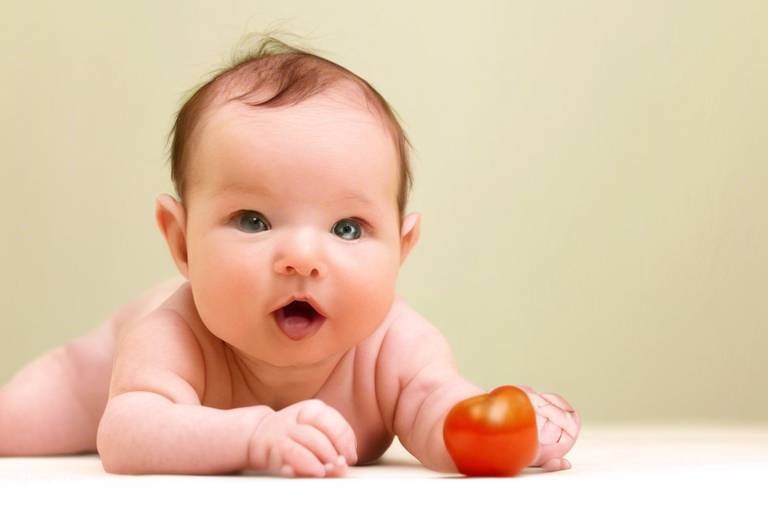Teaching Kids to Cook: An Approach to Healthy Eating
In today's fast-paced world, where fast food often takes precedence over home-cooked meals, teaching kids to cook is more important than ever. Not only does it equip them with essential life skills, but it also lays the foundation for healthy eating habits that can last a lifetime. Imagine a world where your child confidently whips up a nutritious meal, understanding every ingredient that goes into it. This article dives into the myriad benefits of cooking, the nutritional education it provides, and practical tips for parents to engage their kids in the kitchen.
Cooking skills are not just about preparing food; they are a gateway to independence, creativity, and a better understanding of nutrition. When children learn to cook, they gain the ability to make informed decisions about what they eat. Instead of relying on pre-packaged meals, they can create nourishing dishes from scratch. This not only promotes a healthier lifestyle but also instills a sense of pride and accomplishment. Picture your child experimenting with flavors and textures, transforming simple ingredients into a delightful meal. That’s the magic of cooking!
Cooking provides a fantastic platform for nutritional education. When children are involved in meal preparation, they learn about food groups, portion sizes, and the significance of a balanced diet. For instance, while chopping vegetables, they can discuss the different nutrients each one provides. By making the connection between cooking and nutrition, kids are more likely to embrace healthy eating habits. Why not take it a step further? Integrate fun facts about food into your cooking sessions. For example, did you know that carrots were originally purple? This kind of trivia can make cooking even more engaging!
One of the most valuable skills a child can learn is how to read and understand food labels. This knowledge is crucial for making informed dietary choices. During your cooking lessons, take a moment to examine the labels of various ingredients. Discuss what the terms mean, such as calories, fats, and sugars. By demystifying food labels, children will feel empowered to make healthier choices at the grocery store and in their everyday lives.
As kids learn to cook, they should also be educated on how to identify healthy ingredients. This knowledge is invaluable when they are grocery shopping or preparing meals. Encourage them to look for fresh produce, whole grains, and lean proteins. You could even create a fun game where they have to identify healthy foods during a shopping trip. This not only reinforces their learning but also makes grocery shopping an exciting adventure!
Understanding where food comes from can spark children's interest in cooking. Discussing the journey of ingredients—from farm to table—fosters a deeper appreciation for fresh, local produce and sustainable practices. For example, you can take a trip to a local farmer's market and let your kids pick out fruits and vegetables. This hands-on experience connects them to their food and encourages them to try new ingredients. It’s like a treasure hunt, but instead of gold, they discover delicious, healthy foods!
Engaging kids in hands-on cooking activities enhances their learning experience. Simple, fun recipes can encourage creativity and make cooking a joyful family activity. Consider starting with easy dishes like homemade pizzas or smoothies, where kids can choose their toppings or ingredients. The kitchen becomes a playground for experimentation, allowing children to express themselves while learning valuable skills. Remember, the more fun they have, the more likely they are to develop a lifelong love for cooking!
Cooking can significantly boost children's confidence. As they master new skills and create their own meals, they gain a sense of accomplishment and pride in their abilities. Every time they successfully prepare a dish, it’s like they’ve conquered a mini-mountain. This newfound confidence extends beyond the kitchen, positively impacting other areas of their lives. They learn that they can tackle challenges and succeed, which is a valuable lesson for any child.
Encouraging kids to experiment with flavors and ingredients fosters creativity in the kitchen. Give them the freedom to swap out ingredients or try new spices. This approach helps them develop their unique tastes and preferences while learning to enjoy the cooking process. Think of it as a science experiment—sometimes things will turn out deliciously, and other times, not so much. But that’s all part of the learning experience!
Creating a safe cooking environment is essential for kids. Parents should ensure that the kitchen is equipped with child-friendly tools and safety guidelines to promote a secure cooking experience. This includes using age-appropriate utensils, teaching kids about knife safety, and ensuring they know how to handle hot surfaces. A safe kitchen allows children to explore and learn without unnecessary risks, making cooking a worry-free activity.
Cooking together as a family strengthens bonds and creates lasting memories. It’s not just about the food; it’s about the laughter, the teamwork, and the shared experiences in the kitchen. Incorporating cooking into family time can also encourage healthy eating habits among family members. Set aside one evening a week for a family cooking night. Each week, a different family member can choose the recipe, making everyone feel involved and valued. It’s a delicious way to connect and promote healthy eating habits!
- What age should I start teaching my child to cook? It's best to start as early as possible, even with simple tasks. Children as young as 3 can help with washing vegetables!
- How can I make cooking fun for my kids? Incorporate games, let them choose recipes, and praise their efforts. The more fun they have, the more they’ll want to cook!
- What are some easy recipes for kids? Try pancakes, smoothies, or homemade pizzas. These are simple and allow for creativity!
- How can I ensure my child is safe in the kitchen? Teach them about kitchen safety, supervise them closely, and use child-friendly tools.

The Importance of Cooking Skills
Cooking skills are more than just a way to prepare food; they are a vital part of a child's development that promotes independence, creativity, and a foundation for healthy eating habits. Imagine a child standing in the kitchen, apron on, hands covered in flour, as they learn to whip up their favorite dish. This experience not only teaches them how to cook but also instills a sense of responsibility and self-sufficiency. When kids learn to cook, they gain the ability to make choices about what they eat, which is crucial in a world filled with fast food and processed snacks.
Moreover, understanding the basics of cooking empowers children to make nutritious choices for themselves. It’s like giving them a toolbox filled with skills that they can use throughout their lives. When they know how to prepare a meal, they’re less likely to rely on unhealthy options. Instead of reaching for that bag of chips, they might think, “Hey, I can make a delicious salad or a smoothie!” This shift in mindset can lead to a lifetime of healthy eating.
In addition to fostering healthy eating habits, cooking also encourages creativity. Kids can experiment with different ingredients and flavors, turning a simple meal into an exciting culinary adventure. Just think of cooking as a form of art: the kitchen is their canvas, and food is their medium. They can mix and match spices, try new vegetables, and even create their own recipes. This not only makes cooking fun but also helps them develop their unique tastes and preferences.
Furthermore, cooking together can serve as a wonderful bonding activity for families. It’s a time to share stories, laugh, and create lasting memories. When parents involve their kids in meal preparation, it becomes a shared experience that strengthens family ties. Plus, it’s a great way for parents to model healthy eating behaviors, showing their children that cooking can be both enjoyable and rewarding.
Ultimately, teaching kids to cook is an investment in their future. It’s about giving them the skills they need to navigate the world of food confidently. As they learn to prepare meals, they also learn valuable life lessons about nutrition, teamwork, and the importance of making informed choices. So, why not roll up those sleeves, gather the family, and start cooking together? The kitchen is waiting!

Nutritional Education Through Cooking
Teaching kids to cook is more than just a fun activity; it’s a powerful tool for nutritional education. When children participate in meal preparation, they gain hands-on experience that helps them understand the importance of a balanced diet. This process not only makes them aware of what goes into their meals but also instills a sense of responsibility towards their health. Imagine your child, apron on, confidently chopping vegetables and measuring ingredients—this is a moment of empowerment that can shape their eating habits for life!
One of the key aspects of nutritional education is learning about food groups. When children help in the kitchen, they naturally encounter various ingredients, which provides an excellent opportunity to discuss the different food groups. For example, while preparing a colorful salad, you can explain how fruits and vegetables are essential for vitamins and minerals, while grains provide energy. This interactive learning can make the information stick better than any textbook could!
Additionally, understanding portion sizes is crucial for developing healthy eating habits. Kids often struggle with knowing how much to eat, and cooking gives them a practical way to visualize portions. You can encourage them to use measuring cups and spoons, which not only teaches them about serving sizes but also reinforces math skills in a real-world context. Picture this: your child measuring out a cup of rice and realizing that it’s more than enough for their meal—this kind of knowledge is invaluable.
Another vital component of nutritional education is the ability to read food labels. This skill can be seamlessly integrated into cooking lessons. When you shop for ingredients, take the time to read labels together. Discuss what each component means—calories, fats, sugars, and nutrients. This practice empowers children to make informed choices when they’re at the grocery store or even when they’re older and shopping on their own. To illustrate this, here’s a simple table comparing two snack options:
| Snack | Calories | Sugars | Protein |
|---|---|---|---|
| Granola Bar | 150 | 10g | 3g |
| Fruit Salad | 100 | 5g | 1g |
By comparing these two options, kids can see how a healthier choice can be just as satisfying. This kind of practical application of nutritional knowledge is what sticks with them as they grow.
Moreover, cooking also provides a platform for discussing the benefits of a balanced diet. You can talk about how different nutrients support various bodily functions. For instance, proteins help build muscles, while carbohydrates fuel their energy needs. Engaging kids in these discussions while they cook helps them connect the dots between what they eat and how it affects their bodies. It’s like teaching them to be their own health advocates!
In conclusion, teaching kids to cook is a fun and effective way to provide them with essential nutritional education. By involving them in the kitchen, you’re not just preparing meals; you’re equipping them with the knowledge and skills they need to make healthy choices throughout their lives. So, roll up those sleeves, grab those spatulas, and let the culinary adventures begin!
- What age should I start teaching my child to cook? It's best to start as early as possible, even with simple tasks like washing vegetables or stirring ingredients.
- How can I make cooking fun for my kids? Choose fun recipes, incorporate games, and let them pick ingredients to make it more engaging!
- Are there any safety tips I should follow? Always supervise your child in the kitchen and use child-friendly utensils to ensure safety.
- Can cooking help with picky eaters? Yes! Getting kids involved in cooking can increase their willingness to try new foods.

Understanding Food Labels
Understanding food labels is a crucial skill that can empower children to make informed dietary choices. When kids learn to read food labels, they begin to grasp the significance of the nutritional information provided. It’s like having a treasure map that leads them to healthier food options! By interpreting these labels, children can identify what goes into their bodies, fostering a sense of responsibility towards their health.
Food labels typically include several key components, such as serving size, calories, nutrients, and ingredient lists. By teaching kids how to analyze these elements, parents can instill a deeper understanding of nutrition. For instance, when children see that a snack contains a high amount of sugar or unhealthy fats, they can learn to make better choices. This skill not only aids in making healthier selections but also encourages them to question the foods they consume.
To make this learning process engaging, parents can set up fun activities around reading food labels. For example, they could create a game where kids have to find the healthiest snack option based on the labels. This interactive approach not only makes learning enjoyable but also reinforces the importance of being mindful about food choices.
Here's a quick overview of the essential elements found on food labels:
| Label Component | Description |
|---|---|
| Serving Size | The amount of food that is considered one serving, which helps in understanding portion control. |
| Calories | The total number of calories in one serving, important for energy balance. |
| Nutrients | Includes fats, carbohydrates, proteins, vitamins, and minerals that are essential for health. |
| Ingredient List | A detailed list of all ingredients in the product, usually listed in order of quantity. |
Additionally, it’s beneficial to teach kids about daily values. These percentages indicate how much a nutrient in a serving contributes to a daily diet, helping them understand moderation. For example, if a food label shows that a snack contains 20% of the daily value of saturated fat, kids can learn that it should be consumed sparingly.
Ultimately, by integrating food label education into cooking lessons, children can develop a keen awareness of nutrition. This knowledge not only empowers them to make healthier choices but also builds a foundation for lifelong healthy eating habits. So, the next time you’re in the grocery store, take a moment to dive into the world of food labels with your kids—it could be the start of a deliciously healthy journey!
- Why is it important for kids to learn about food labels? Understanding food labels helps children make informed choices about what they eat, promoting healthier eating habits.
- At what age should children start learning about food labels? Children can begin learning about food labels as early as 6 or 7 years old, depending on their interest and understanding.
- How can I make learning about food labels fun? Turn it into a game! Challenge your kids to find the healthiest options or create a scavenger hunt based on label information.

Identifying Healthy Ingredients
When it comes to cooking, one of the most valuable lessons you can teach your kids is how to identify healthy ingredients. This skill not only empowers them to make better choices in the kitchen but also equips them with the knowledge to shop wisely at the grocery store. Imagine your child walking through the aisles, confidently picking out fresh vegetables and whole grains, knowing exactly what to look for. It's like giving them a superpower!
Start by introducing your kids to the concept of whole foods. Whole foods are ingredients that are as close to their natural state as possible. For instance, fruits, vegetables, nuts, seeds, and whole grains are all excellent examples. You can explain that these foods are packed with nutrients that are essential for their growth and development. On the other hand, processed foods often contain added sugars, unhealthy fats, and preservatives that can be detrimental to their health.
To make this learning experience engaging, take your kids on a grocery store adventure. Challenge them to find specific ingredients that fit into the healthy category. You can create a fun scavenger hunt by giving them a list of healthy items to find, such as:
- Fresh fruits (like apples, bananas, and berries)
- Colorful vegetables (like spinach, bell peppers, and carrots)
- Whole grains (like brown rice, quinoa, and whole wheat bread)
- Lean proteins (like chicken, fish, and beans)
As you explore the store together, take the time to read food labels. This is where the magic happens! Teach your kids how to decipher the nutrition facts and ingredients list. Explain what to look for, such as:
| Label Element | What to Look For |
|---|---|
| Serving Size | Understand the portion size to gauge how much you're consuming. |
| Ingredients List | Aim for items that are whole foods and avoid those with long, unrecognizable names. |
| Sugar Content | Look for products with lower sugar content, ideally less than 5 grams per serving. |
| Healthy Fats | Focus on unsaturated fats and avoid trans fats. |
By teaching kids to identify healthy ingredients, you're not just preparing them for a cooking adventure; you're setting them up for a lifetime of healthy eating habits. They’ll learn to appreciate the flavors of fresh, wholesome foods and understand how these choices impact their well-being. Plus, when they’re involved in selecting ingredients, they’re more likely to feel excited about cooking and eating what they've prepared. So, why not turn grocery shopping into a fun, educational experience that ignites their passion for cooking?
Q: How can I make grocery shopping fun for my kids?
A: Turn it into a game! Create a scavenger hunt or a list of healthy items for them to find. You can even set a timer to see how quickly they can locate everything!
Q: What are some easy recipes to start with?
A: Start with simple recipes like smoothies, salads, or stir-fries. These dishes require minimal cooking and allow kids to experiment with different ingredients.
Q: How can I ensure my kids are safe while cooking?
A: Always supervise them, use child-friendly tools, and teach them about kitchen safety, such as handling knives and using the stove properly.

Exploring Food Origins
Understanding where our food comes from can be a fascinating journey for kids. When children learn about the origins of their meals, it not only sparks their curiosity but also deepens their appreciation for the food they consume. Imagine the excitement on a child’s face when they discover that their favorite pizza starts with fresh tomatoes and flour, or that the crunchy carrots they love grow underground! This connection to food can transform mealtime from a mundane routine into an adventurous exploration.
To make this exploration engaging, parents can incorporate fun activities that bring food origins to life. For instance, visiting local farms or farmers' markets can be an eye-opening experience. Kids can see firsthand how fruits and vegetables are grown, harvested, and brought to their tables. This not only fosters a sense of community but also highlights the importance of supporting local agriculture.
In addition to farm visits, parents can create interactive lessons at home. For example, they can organize a cooking night where each dish represents a different part of the world. As they prepare a traditional Italian pasta dish, parents can share stories about its origins, the ingredients used, and how they are sourced. This storytelling aspect makes the cooking process more meaningful and helps kids understand the cultural significance behind the food.
Moreover, discussing the environmental impact of food choices can also be enlightening. Kids can learn about:
- Seasonal eating: Understanding which fruits and vegetables are in season can help them appreciate freshness and reduce environmental impact.
- Sustainable practices: Learning about organic farming and sustainable fishing can instill a sense of responsibility towards the planet.
- Food waste: Discussing the importance of minimizing waste encourages them to be mindful of their consumption habits.
By exploring food origins, children not only become more informed eaters but also develop a lifelong respect for the food they enjoy. This knowledge empowers them to make healthier choices and encourages them to be curious about different cuisines and cultures. It’s like planting a seed of awareness that will grow into a tree of understanding, branching out into various aspects of their lives.
Q: How can I get my kids interested in cooking?
A: Start with simple, fun recipes that allow them to get hands-on experience. Involve them in meal planning and let them choose dishes they want to try.
Q: What age is appropriate for kids to start cooking?
A: Children as young as 3 can start with basic tasks like washing vegetables, while older kids can handle more complex cooking tasks. Always supervise and adjust tasks based on their age and skill level.
Q: How can I ensure my kitchen is safe for kids?
A: Use child-friendly utensils, keep sharp objects out of reach, and teach them about kitchen safety rules. Always supervise them closely while they cook.
Q: What are some healthy recipes to start with?
A: Try making smoothies, vegetable stir-fries, or homemade pizzas with plenty of toppings. These recipes are not only healthy but also allow for creativity.

Hands-On Cooking Activities
Engaging kids in is one of the most effective ways to make learning fun and interactive. When children are actively involved in the cooking process, they not only develop essential skills but also create lasting memories with their family. Think of cooking as a delightful adventure where kids can explore flavors, textures, and the joy of creating something delicious from scratch!
One of the best ways to kick off this culinary journey is by choosing simple recipes that are both exciting and age-appropriate. For instance, making homemade pizzas can be a hit! Kids can roll out the dough, spread the sauce, and sprinkle their favorite toppings. This not only allows them to express their creativity but also teaches them about portion sizes and the importance of balanced meals. Plus, who doesn’t love pizza?
Another fun activity is to host a themed cooking night. You could explore different cuisines from around the world, such as Italian, Mexican, or Asian. Each week, pick a country and prepare a traditional dish together. This not only introduces children to new flavors but also educates them about cultural diversity. For example, while making sushi, kids can learn about the ingredients and the significance of each element in the dish.
To enhance their learning experience, consider incorporating educational elements into these activities. For example, while preparing a salad, discuss the nutritional benefits of each ingredient. You could create a
| Vegetable | Vitamins | Minerals |
|---|---|---|
| Carrots | Vitamin A | Potassium |
| Spinach | Vitamin K | Iron |
| Bell Peppers | Vitamin C | Magnesium |
Moreover, hands-on cooking activities can also include baking. Kids love to measure ingredients, mix batter, and watch their creations rise in the oven. Baking is like a science experiment where precise measurements and timing can lead to delicious results. It’s a great way to introduce concepts of math and science while having fun!
Lastly, don’t forget to encourage kids to share their culinary creations with family and friends. This not only boosts their confidence but also helps them appreciate the hard work that goes into preparing meals. Celebrating their successes, no matter how small, reinforces the idea that cooking is a valuable skill that they can carry into adulthood.
In conclusion, hands-on cooking activities are a fantastic way to engage children in the kitchen. They promote learning, creativity, and a sense of accomplishment. So, roll up your sleeves, gather your ingredients, and embark on this delicious journey together!
- What age is appropriate to start teaching kids to cook?
Generally, children can start helping in the kitchen as young as 2 or 3 years old with simple tasks. As they grow, they can take on more complex responsibilities. - How can I ensure my child is safe in the kitchen?
Always supervise them, use child-friendly utensils, and teach them about kitchen safety, such as handling knives and hot surfaces. - What are some easy recipes for kids?
Some great beginner recipes include smoothies, sandwiches, and no-bake desserts like rice crispy treats.

Building Confidence in the Kitchen
Cooking can significantly boost children's confidence. When kids step into the kitchen, they're not just mixing ingredients; they’re embarking on a journey of self-discovery and empowerment. Each time they chop, stir, or bake, they learn to trust their abilities. Imagine the thrill of pulling a freshly baked cookie from the oven or serving a homemade meal to the family! These moments are not just about food; they’re about building a sense of accomplishment that can translate into other areas of their lives.
As children master new skills, they gain a sense of pride in their culinary creations. This sense of achievement can be likened to solving a challenging puzzle or scoring a goal in a game. Every time they successfully complete a recipe, they add a new tool to their cooking toolbox. This can range from simple tasks like measuring ingredients to more complex ones like sautéing vegetables or baking a cake. With each successful dish, their confidence grows, and they begin to see themselves as capable chefs.
Encouraging kids to experiment with flavors and ingredients is a fantastic way to foster creativity in the kitchen. It’s like giving them the chance to be artists, where the kitchen is their canvas. They can mix and match spices, try out new vegetables, or even create their own signature dishes. This experimentation not only helps them develop their unique tastes and preferences but also teaches them that making mistakes is a part of the learning process. After all, even the best chefs have had their share of kitchen disasters!
To facilitate this journey, parents can set up a safe cooking environment that encourages exploration. A well-organized kitchen, equipped with child-friendly tools, can make a world of difference. Think of it as creating a playground where kids feel free to play, experiment, and learn without fear. Safety guidelines should be clearly communicated, ensuring that children understand the importance of being cautious around hot surfaces and sharp utensils. This not only protects them but also allows them to focus on the joy of cooking.
Moreover, cooking together as a family can reinforce the confidence children build in the kitchen. When parents and kids collaborate on a recipe, it creates a team atmosphere that fosters communication and teamwork. It's a beautiful way to bond while instilling healthy eating habits. As they chop vegetables or roll out dough, they share stories, laughter, and sometimes even a little friendly competition. This shared experience not only strengthens family ties but also makes cooking a joyful and memorable activity.
In conclusion, building confidence in the kitchen is more than just teaching kids how to cook. It’s about empowering them with skills that will benefit them for a lifetime. By encouraging experimentation, creating a safe environment, and incorporating family time into cooking, parents can cultivate a love for food and cooking that will last well into adulthood.
- How can I get my child interested in cooking? Start with fun, simple recipes that they can relate to, like pizza or cookies. Involve them in meal planning and grocery shopping for added excitement.
- What age is appropriate for kids to start cooking? Children as young as 3 can begin with simple tasks like washing vegetables, while older kids can handle more complex tasks with supervision.
- Are there any safety tips I should keep in mind? Yes! Always supervise children in the kitchen, teach them about knife safety, and ensure they understand the dangers of hot surfaces.
- How can I make cooking a fun family activity? Create themed cooking nights, play cooking games, or introduce friendly competitions to make cooking a fun and engaging experience.

Encouraging Experimentation
Encouraging kids to experiment in the kitchen is like giving them a blank canvas to paint their culinary masterpieces. Just imagine the excitement on their faces as they mix, match, and create unique flavors! Cooking is not just about following recipes; it’s a chance for children to unleash their creativity and develop a personal connection to food. By fostering this spirit of experimentation, we can help them discover new tastes, textures, and even the joy of cooking itself.
One of the best ways to encourage experimentation is to provide a variety of ingredients. Stocking your kitchen with a diverse selection of fruits, vegetables, spices, and grains can inspire kids to try new combinations. For instance, have you ever thought about how a sprinkle of cinnamon can transform a simple apple into a delightful treat? Or how adding a dash of lime can elevate a basic salad into a refreshing dish? By introducing them to different flavors, you’re not just teaching them to cook; you’re opening their eyes to a world of culinary possibilities.
Another fantastic way to promote experimentation is through themed cooking challenges. You might set a theme for the week, such as “Taco Tuesday” or “Pasta Party,” and encourage your kids to come up with their own twists on these classic dishes. Imagine your child creating a taco with unexpected ingredients like mango or black beans instead of the usual ground beef. Not only does this foster creativity, but it also allows them to take ownership of their meals, making cooking a more personal and enjoyable experience.
Moreover, it’s important to celebrate their efforts, regardless of the outcome. If a dish doesn’t turn out as expected, use it as a learning opportunity. Ask questions like, “What do you think we could do differently next time?” or “How did that ingredient change the flavor?” This approach teaches resilience and encourages them to keep trying, much like a scientist conducting experiments in a lab. Remember, every culinary mishap is a stepping stone to mastery!
Lastly, consider incorporating cooking games or apps that allow kids to explore recipes and create virtual dishes. This not only makes cooking fun but also keeps them engaged and excited about trying new things in real life. You’ll be amazed at how much they learn while having a blast!
In summary, encouraging experimentation in the kitchen is about more than just cooking; it’s about nurturing creativity, building confidence, and fostering a lifelong love for food. So, roll up your sleeves, gather those ingredients, and let the culinary adventures begin!
- How can I get my kids interested in cooking?
Start with simple, fun recipes that they can relate to, and involve them in the process from shopping to preparation. - What are some safe cooking activities for young children?
Consider no-cook recipes, like assembling salads or making smoothies, which allow them to participate without the risks of heat. - How do I handle kitchen disasters?
Emphasize that mistakes are part of learning. Discuss what went wrong and how to improve next time.

Setting Up a Safe Cooking Environment
This article explores the benefits of teaching children to cook, fostering healthy eating habits, and providing practical tips and resources for parents to engage their kids in the kitchen.
Cooking skills are essential for children as they promote independence, creativity, and healthy eating habits. Understanding the basics of cooking can empower kids to make nutritious choices for themselves.
Teaching kids to cook provides an opportunity for nutritional education. By involving them in meal preparation, they learn about food groups, portion sizes, and the benefits of a balanced diet.
Learning to read and understand food labels is crucial for making informed dietary choices. This skill can be integrated into cooking lessons to enhance kids' awareness of nutrition.
Kids can benefit from learning how to identify healthy ingredients while cooking. This knowledge helps them make better choices when grocery shopping or preparing meals.
Discussing where food comes from can spark children's interest in cooking. Understanding the journey of ingredients fosters appreciation for fresh, local produce and sustainable practices.
Engaging kids in hands-on cooking activities enhances their learning experience. Simple, fun recipes can encourage creativity and make cooking a joyful family activity.
Cooking can significantly boost children's confidence. As they master new skills and create their own meals, they gain a sense of accomplishment and pride in their abilities.
Encouraging kids to experiment with flavors and ingredients fosters creativity in the kitchen. This approach helps them develop their unique tastes and preferences while learning to enjoy cooking.
Creating a safe cooking environment is essential for kids. A well-organized kitchen can help prevent accidents and ensure that children feel comfortable while cooking. Here are some key aspects to consider:
- Child-Friendly Tools: Equip your kitchen with tools that are suitable for children. Look for knives with rounded tips, measuring cups with easy-to-read markings, and non-slip cutting boards. This way, kids can participate without the risk of injury.
- Safety Guidelines: Teach children basic kitchen safety rules. Explain the importance of washing hands before cooking, handling hot items with care, and staying focused while using knives or other sharp utensils.
- Supervised Cooking: Always supervise young children while they are cooking. This not only ensures their safety but also provides an opportunity for you to bond and share cooking tips.
- Clean Workspace: Keep the cooking area clean and organized. A clutter-free kitchen minimizes the chances of spills and accidents, making it easier for kids to focus on their cooking tasks.
Additionally, consider setting up a designated cooking area where children can freely explore their culinary skills. This space should be equipped with all the necessary tools and ingredients, making it a fun and inviting place for them to experiment.
Cooking together as a family strengthens bonds and creates lasting memories. Incorporating cooking into family time can also encourage healthy eating habits and teamwork among family members.
Q: At what age should I start teaching my child to cook?
A: You can start introducing basic cooking skills as early as 3 years old, focusing on simple tasks like washing vegetables or stirring ingredients. As they grow older, you can teach them more complex skills.
Q: How can I keep my child engaged while cooking?
A: To keep your child engaged, choose recipes that are fun and interactive. Let them pick the recipe, and encourage them to express their creativity by choosing ingredients or decorating the dish.
Q: What are some easy recipes for kids?
A: Some easy recipes include homemade pizza, fruit smoothies, or simple pasta dishes. These recipes are not only enjoyable but also allow kids to learn essential cooking skills.
Q: How do I handle kitchen accidents?
A: It's important to stay calm. If a minor accident occurs, reassure your child and teach them how to handle similar situations in the future. Emphasize that mistakes are part of the learning process.

Incorporating Cooking into Family Time
Cooking together as a family is more than just preparing meals; it’s an opportunity to forge connections and create cherished memories. Imagine the laughter echoing in the kitchen as you and your kids mix ingredients, or the sense of teamwork as you chop vegetables side by side. When families cook together, they not only share the workload but also the joys of culinary exploration. This shared experience can transform a mundane task into a fun adventure.
One of the best parts about cooking as a family is that it encourages healthy eating habits. When kids are involved in the cooking process, they are more likely to try new foods and develop a taste for nutritious ingredients. Consider this: if your child helps to prepare a colorful salad, they might be more inclined to eat it, knowing they played a part in its creation. Involving children in meal prep can also spark their curiosity about different foods and cooking methods, leading to a broader palate over time.
To make cooking a regular family affair, consider setting aside specific days of the week dedicated to cooking together. You might designate “Family Cooking Night” on Fridays, where everyone can contribute ideas for the meal. This not only gives everyone something to look forward to but also encourages participation and ownership over what’s being made. You can rotate responsibilities, allowing each family member to take the lead on different nights, fostering a sense of pride and accomplishment.
When planning meals, try to incorporate a variety of cooking techniques to keep things interesting. For example, one week you could focus on baking, while the next could be all about grilling. This variety helps children learn different skills and keeps them engaged. You can even create a fun challenge, like trying to make a dish from a different culture each week, turning your kitchen into a global culinary hub.
Moreover, cooking together can teach invaluable life skills. Kids learn to follow instructions, measure ingredients, and understand the importance of timing and patience. These skills are not just limited to the kitchen; they translate into other areas of life, teaching children about responsibility and the satisfaction of completing a task. Plus, as they become more competent in the kitchen, they gain a sense of independence that is truly empowering.
In addition to the practical skills learned, cooking as a family can also be a time for open conversations. While chopping vegetables or stirring a pot, you can discuss your day, share stories, or even talk about important topics like nutrition and sustainability. This informal setting often leads to deeper connections and understanding among family members.
To wrap it up, incorporating cooking into family time is a delightful way to strengthen bonds while promoting healthy habits. It’s about more than just food; it’s about creating experiences that will be remembered for years to come. So, why not grab those aprons and start your culinary journey together? The kitchen is waiting!
- What age should I start teaching my kids to cook?
It's great to start as early as 3 or 4 years old with simple tasks like washing vegetables or stirring ingredients. As they grow, you can introduce more complex skills. - How can I make cooking fun for my kids?
Incorporate games, challenges, or themed cooking nights. Allow them to choose recipes and decorate dishes to make the experience enjoyable. - What are some easy recipes to start with?
Look for simple recipes like smoothies, sandwiches, or pasta dishes. These require minimal ingredients and are generally kid-friendly. - How can I ensure kitchen safety for my children?
Teach them about kitchen safety rules, supervise them closely, and provide age-appropriate tools and equipment.
Frequently Asked Questions
- Why should I teach my kids to cook?
Teaching your kids to cook is like giving them a superpower! It promotes independence, creativity, and healthy eating habits. When kids learn to prepare their own meals, they become more aware of what they’re putting into their bodies, leading to better nutrition choices.
- What age is appropriate to start cooking with my children?
There's no one-size-fits-all answer, but you can start involving your children in the kitchen as early as age 2 or 3 with simple tasks like washing vegetables. As they grow, you can introduce more complex skills. It's all about making it fun and age-appropriate!
- How can cooking help with nutritional education?
Cooking is a fantastic way to teach kids about nutrition! When they're involved in meal prep, they learn about food groups, portion sizes, and the importance of a balanced diet. Plus, it’s a hands-on experience that makes the learning stick!
- What are some easy recipes to start with?
Start with simple and fun recipes like homemade pizzas, smoothies, or fruit salads. These recipes allow kids to get creative while learning basic cooking skills. The key is to keep it enjoyable and engaging!
- How do I ensure a safe cooking environment for my children?
Creating a safe cooking environment is crucial. Make sure to use child-friendly tools, supervise them closely, and teach them about kitchen safety, like handling knives and hot surfaces. Safety first, fun second!
- Can cooking together improve family bonding?
Absolutely! Cooking together as a family is a wonderful way to strengthen bonds and create lasting memories. It encourages teamwork and communication, and you get to enjoy the delicious results together!
- How can I encourage my kids to experiment with flavors?
Encourage experimentation by providing a variety of ingredients and asking questions like, "What do you think would taste good together?" This sparks their creativity and helps them develop their unique tastes while having fun in the kitchen!
- What are some tips for teaching kids to read food labels?
Start by showing them how to identify key information, like serving sizes and nutritional values. Make it a game by comparing different products and discussing which options are healthier. This skill will empower them to make informed choices!



















